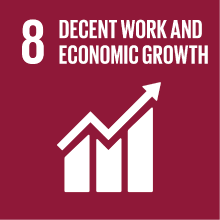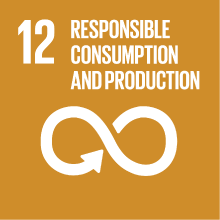BIOINORGANIC CHEMISTRY AND PHOTO(BIO)CHEMISTRY - MOD. 1
- Academic year
- 2022/2023 Syllabus of previous years
- Official course title
- BIOINORGANIC CHEMISTRY AND PHOTO(BIO)CHEMISTRY - MOD. 1
- Course code
- CM0594 (AF:374639 AR:212352)
- Modality
- On campus classes
- ECTS credits
- 6 out of 12 of BIOINORGANIC CHEMISTRY AND PHOTO(BIO)CHEMISTRY
- Degree level
- Master's Degree Programme (DM270)
- Educational sector code
- CHIM/03
- Period
- 2nd Semester
- Course year
- 1
- Where
- VENEZIA
- Moodle
- Go to Moodle page
Contribution of the course to the overall degree programme goals
Expected learning outcomes
I) Knowing the occurrence, distribution and uptake of inorganic elements in the living systems.
II) Knowing the main roles of inorganic elements in living systems.
II) Knowing the common biological ligands and their affinity towards metal centres.
IV) Understanding the relationships between bioionorganic structures and roles in the living systems.
V) Knowing and understanding the actions of selected metal-based pharmaceuticals.
2. Ability to apply knowledge and understanding.
I) Being able to logically interpret the biological activity of a metal complex.
II) Being able to interpret the structure-activity relationship of a metal drug.
III) Being able frame the reactivity of bio-inspired metal compounds in terms of sustainability.
3. Ability to judge
I) Being able to evaluate the biological activity of metal ions on changing the coordination sphere.
II) Being able to recognize the possible action of a metal drug on the basis of its molecular structure.
III) Being able to recognize analogies between synthetic and biological metal compounds.
4. Communication skills
I) Being able to use the appropriate scientific-technical terminology to discuss the course contents.
II) Being able to interact constructively with the teacher and with the other students.
5. Learning skills
I) Being able to autonomously synthesize the salient aspects of the concepts expressed in class.
II) Being able to make logical connections between the topics of the course.
Pre-requirements
Contents
1) Occurrence, availability and main roles of inorganic elements in the organisms.
2) Bioligands (proteins, macrocycles, nucleic acids and their derivatives, polyphosphates, siderophores).
3) Biomineralization (calcium phosphate and iron storage in particular).
4) Uptake and transport of oxygen (heme and non-heme iron proteins, hemocyanin, model systems).
5) Metalloenzymes involved in oxygen metabolism (monooxygenases, oxygenases, peroxidases, superoxide dismutases).
6) Metalloproteins involved in electron transfer (cytochromes, blue copper proteins, iron-sulphur proteins).
7) Iron, molybdenum and vanadium in the fixation of nitrogen.
8) Enzymes involved in hydrolysis reactions (nickel urease, zinc-containing enzymes).
9) Bio-organometallic chemistry (cobalamins and their reactions, organometallic nickel complexes).
10) Selected transition metal-based drugs, contrast agents and radiopharmaceuticals.
The arguments will be extended with examples of related bio-inspired metal complexes for sustainable chemical processes and technology. In selected cases, the role of inorganic p-block trace elements crucial for life will be also described.
Referral texts
I) Teaching materials, available at https://drive.google.com/drive/folders/0B6EkDs_UUlhBbjVNNkI5MVNqYkE?usp=sharing
II) W. Kaim, B. Schwederski, A. Klein, Bioinorganic Chemistry: Inorganic Elements In the Chemistry of Life; 2nd ed., Wiley, 2013.
III) J. Ribas Gispert, Coordination Chemistry; Wiley-VCH, 2008.
IV) C. E. Housecroft, A. G. Sharpe, Inorganic Chemistry; 5th ed., Pearson, 2018.
Assessment methods
Type of exam
Teaching methods
Teaching language
Further information
Accommodation and support services for students with disabilities and students with specific learning impairments:
Ca’ Foscari abides by Italian Law (Law 17/1999; Law 170/2010) regarding support services and accommodation available to students with disabilities. This includes students with mobility, visual, hearing and other disabilities (Law 17/1999), and specific learning impairments (Law 170/2010). In the case of disability or impairment that requires accommodations (i.e., alternate testing, readers, note takers or interpreters) please contact the Disability and Accessibility Offices in Student Services: disabilita@unive.it.
Structure and content of the course could change as a result of the COVID-19 epidemic.
2030 Agenda for Sustainable Development Goals
This subject deals with topics related to the macro-area "Circular economy, innovation, work" and contributes to the achievement of one or more goals of U. N. Agenda for Sustainable Development


